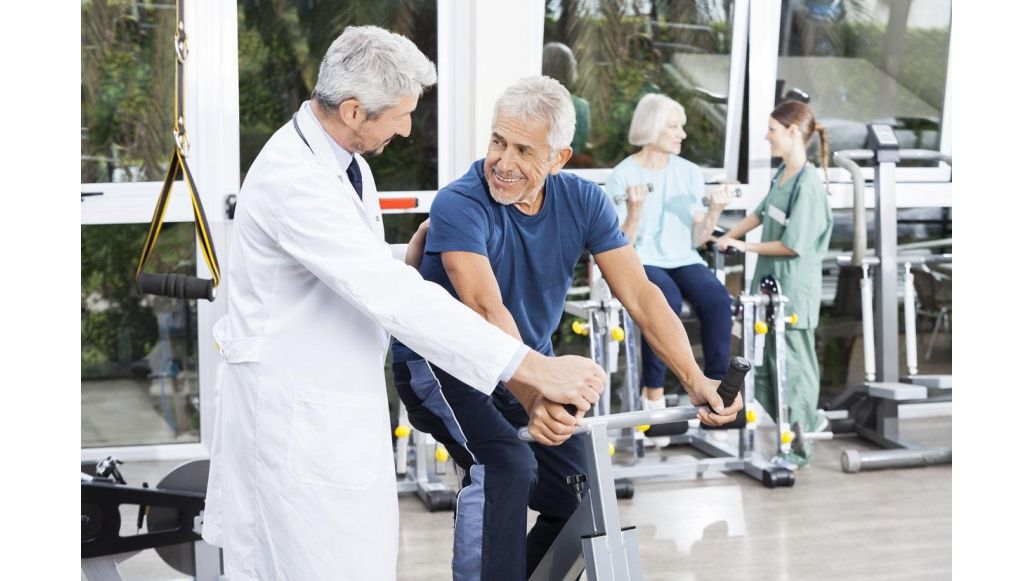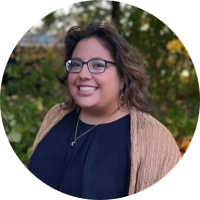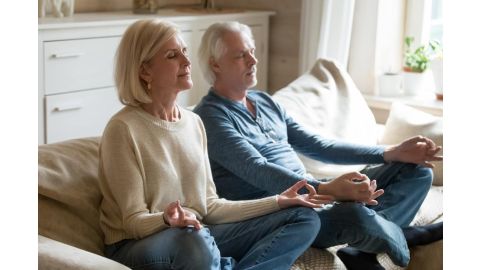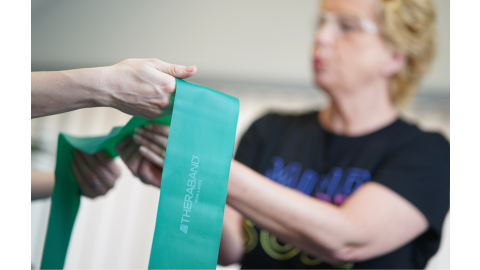Every year, nearly 800,000 people in the U.S. have a heart attack.1 That’s more than the ENTIRE population of Seattle. And about 25% of those people have previously suffered a heart attack in the past (think of it as the population of Salt Lake City).1
How do you prevent a second heart attack? Cardiac rehabilitation can help. And it’s not just for heart attack survivors. Studies have found that it helps men and women of all ages with mild, moderate, and severe heart problems.2
What is cardiac rehabilitation?
Cardiac rehabilitation is a medically supervised program designed to improve your cardiovascular (heart) health. It includes training, education, and counseling to teach you how to adopt a heart-healthy lifestyle.
You’re not alone! A team of doctors, nurses, pharmacists, therapists, dieticians, and mental health specialists will guide you through this program. Make the choice to improve your heart health and reduce your risk of future heart problems!
Who needs cardiac rehab?
Cardiac rehabilitation can benefit many people with various forms of heart disease. You may find cardiac rehab useful if your medical history includes:
- Heart attack
- Heart failure
- Coronary artery disease
- Peripheral artery disease
- Angioplasty and stents
- Heart valve surgery (repair or replacement)
- Coronary artery bypass grafting
- Percutaneous coronary intervention
- Chest pain (angina)
- Cardiomyopathy
- Pulmonary hypertension
- Certain congenital heart diseases
- Heart or lung transplant
Who shouldn’t do cardiac rehabilitation?
Cardiac rehabilitation isn’t appropriate for all patients with a history of heart disease. Your health care team will evaluate your health and determine if you are ready to begin a cardiac rehabilitation program. Talk to a medical professional if you have questions about whether a program is right for you.
What are the benefits of cardiac rehabilitation?
- Helps prevent future heart problems and death
- Decreases the chances you will die in the next five years following a heart attack or bypass surgery by 20-30%2, 3
- Strengthens your heart and body
- Relieves heart problem symptoms, such as chest pain
- Improves mood and lessens depression4
- Builds healthy habits (increasing physical activity, eating a heart-healthy diet, quitting smoking, etc.)
- Reduces your stress
- Increases your energy to make daily activities easier
- Makes you more likely to take your medication
Key Components of Cardiac Rehabilitation
- Proper Nutrition and Heart-Healthy Habits
- Cardiac rehab helps you manage your risk factors. Eating heart-healthy foods, quitting smoking, and making other changes to your lifestyle can help improve your heart health.
- Fitness and Exercise
- Exercise works your cardiovascular system and helps promote heart health. Your team will teach you exercises you can do during recovery and as part of your new healthier lifestyle.
- Stress Relief
- Finding causes of stress and learning techniques to help you cope are key parts of cardiac rehab. Find out how you can reduce your stress to keep your heart healthy.
- Medication
- Your cardiac rehab team can teach you techniques so you remember to take your daily medication with tools like medication organizers.
The Four Phases of Cardiac Rehab
Hospitals organize their cardiac rehabilitation into different segments, but most have three to four phases. If the rehab program only has three phases, phases two and three are often combined.
Phase 1: Inpatient Rehab
This first phase of rehabilitation starts when you are still in the hospital. You’ll receive information on cardiac risk factors and symptoms of a heart attack. You will also receive home-exercise walking/stair climbing guidelines and other information specific to your cardiac condition. You may do some beginner physical assessment test to ensure you are ready to go home.
Phase 2: Outpatient Rehab Part One
Phase two starts once you are home from the hospital. In this phase, you return to the hospital or an outpatient rehab center for monitoring while you exercise. A nurse, exercise physiologist, or physical therapist will guide you through exercises and monitor your vitals. During this time you will also receive individual and group education on exercising and healthy living.
Phase 3: Outpatient Rehab Part Two
Phase three is similar to phase two. The primary difference is that you start to take on more responsibility for self-monitoring during exercises.
Phase 4: Maintenance
Phase four is an unmonitored program. You continue to exercise in the same hospital or clinic performing independent exercise workouts at any time when the center is open.
Do I need a referral? Is cardiac rehab covered by my insurance?
You need a referral from your doctor before starting a cardiac rehabilitation program.5 Ask your doctor to refer you. Most insurance plans, as well as Medicare, will cover a standard cardiac rehab program (36 supervised sessions over 12 weeks).6
How long is a cardiac rehab program?
The length of your cardiac rehabilitation program will depend on your diagnosis and your progress throughout treatment.
The first phase occurs during your hospital stay, which for a heart attack is around two to seven days. The second phase is typically ten to twelve weeks long. The third phase varies in length depending on your progress towards unmonitored exercise. The fourth phase’s length will also vary, depending on when you and your health professional feel you are ready to continue the exercise program at home.
You need cardiac rehabilitation.
Cardiac rehabilitation is a crucial part of recovery and prevention after a heart attack or other heart problem. Ask your doctor about a referral and start living a heart-healthy life!
Learn more about:
References
- Benjamin EJ, Blaha MJ, Chive SE, et al. Heart disease and stroke statistics—2017 update: a report from the American Heart Association. Circulation. 2017;135:e146-e603. doi: 10.1161/CIR.0000000000000485.
- Schopfer DW, Forman DE. (2016). Benefits of cardiac rehabilitation in older adults. American College of Cardiology. Retrieved from https://bit.ly/2LsP7WH
- Suaya JA, Stason WB, Ades PA, Normand ST, Shepard DS. Cardiac rehabilitation and survival in older coronary patients. J Am Coll Cardiol. 2009;54:25-33. doi: 10.1016/j.jacc.2009.01.078.
- Milani RV, Lavie CJ. Prevalence and effects of cardiac rehabilitation on depression in the elderly with coronary heart disease. Am J Cardiol. 1998;81:1233-1236.
- Cardiac Rehab: Frequently Asked Questions. (2016). American Heart Association. Retrieved from https://bit.ly/2Ylcd5l
- Beckerman, J. (2018). What You Should Do After a Heart Attack. WebMD. Retrieved from https://wb.md/2LribxU
- Cardiac Rehabilitation. (n.d.). National Heart, Lung, and Blood Institute. Retrieved from https://bit.ly/2ZXco78
- The 200 Largest Cities in the United States by Population 2019. (n.d.) Retrieved from https://bit.ly/2CQMATE
- Mayo Clinic Staff. (2017). Cardiac Rehabilitation. Mayo Clinic. Retrieved from https://mayocl.in/2Ir0bUs
- How Cardiac Rehabilitation Can Help Heal Your Heart. (2017). Centers for Disease Control and Prevention. Retrieved from https://bit.ly/2sPk2jV
- Marymount Hospital. (n.d.). Cardiac Rehabilitation. Marymount Hospital a Cleveland Clinic Hospital. Retrieved from https://cle.clinic/2FDvKqi
Medical Disclaimer: The information provided on this site, including text, graphics, images and other material, are for informational purposes only and are not intended to substitute for professional medical advice, diagnosis or treatment. Always seek the advice of your physician or other healthcare professional with any questions or concerns you may have regarding your condition.
Every year, nearly 805,000 people in the U.S. have a heart attack.1 That’s more than the ENTIRE population of Seattle. And about 25% of those people have previously suffered a heart attack in the past.1
How do you prevent a second heart attack? Cardiac rehabilitation can help. And it’s not just for heart attack survivors. Studies have found that it helps men and women of all ages with mild, moderate, and severe heart problems.2
What is Cardiac Rehabilitation?
Cardiac rehabilitation is a medically supervised program designed to improve your cardiovascular (heart) health. It includes training, education, and counseling to teach you how to adopt a heart-healthy lifestyle.
You’re not alone! Your cardiac rehab team, which may include physical and occupational therapists, doctors, nurses, pharmacists, dieticians, mental health specialists, and other medical professionals, will guide you through the program. Make the choice to improve your heart health and reduce your risk of future heart problems!
Who Needs Cardiac Rehab?
Cardiac rehabilitation can benefit many people with various forms of heart disease. You may find cardiac rehab useful if your medical history includes:
- Heart attack (myocardial infarction)
- Heart failure
- Coronary artery disease (atherosclerosis)
- Peripheral artery disease
- Angioplasty and stents
- Heart valve surgery (repair or replacement)
- Coronary artery bypass grafting
- Percutaneous coronary intervention
- Chest pain (angina)
- Cardiomyopathy
- Pulmonary hypertension
- Certain congenital heart diseases
- Heart or lung transplant
- High blood pressure (hypertension)
Other risk factors can include a family history of heart disease, smoking, physical inactivity, high cholesterol, diabetes, and being overweight.3
Who Shouldn’t Do Cardiac Rehabilitation?
Cardiac rehabilitation isn’t appropriate for all patients with a history of heart disease. Your health care team will evaluate your health and determine if you are ready to begin a cardiac rehabilitation program. Talk to a medical professional if you have questions about whether a program is right for you.
What Are the Denefits of Cardiac Rehabilitation?
- Helps prevent future heart problems and death
- Decreases the chances you will die in the next five years following a heart attack or bypass surgery by 20-30%2, 4
- Strengthens your heart and body
- Relieves heart problem symptoms, such as chest pain
- Improves mood and lessens depression5
- Builds healthy habits (increasing physical activity, eating a heart-healthy diet, quitting smoking, etc.)
- Reduces your stress
- Increases your energy to make daily activities easier
- Makes you more likely to take your medication
Key Components of Cardiac Rehabilitation
- Proper Nutrition and Heart-Healthy Habits
- Cardiac rehab helps you manage your risk factors. Eating heart-healthy foods, quitting smoking, and making other changes to your lifestyle can help improve your heart health.
- Fitness and Exercise
- Exercise works your cardiovascular system and helps promote heart health. Your team will teach you exercises you can do during recovery and as part of your new healthier lifestyle.
- Stress Relief
- Finding causes of stress and learning techniques to help you cope are key parts of cardiac rehab. Find out how you can reduce your stress to keep your heart healthy.
- Medication
- Your cardiac rehab team can teach you techniques so you remember to take your daily medication with tools like medication organizers.
The Four Phases of Cardiac Rehab
Hospitals organize their cardiac rehabilitation into different segments, but most have three to four phases. If the rehab program only has three phases, phases two and three are often combined.
Phase 1: Inpatient Rehab
This first phase of rehabilitation starts when you are still in the hospital. You’ll receive information on cardiac risk factors and symptoms of a heart attack. You will also receive home-exercise walking/stair climbing guidelines and other information specific to your cardiac condition. You may do some beginner physical assessment test to ensure you are ready to go home.
Phase 2: Outpatient Rehab Part One
Phase two starts once you are home from the hospital. In this phase, you return to the hospital or an outpatient rehab center for monitoring while you exercise. A nurse, exercise physiologist, or physical therapist will guide you through exercises and monitor your vitals. During this time you will also receive individual and group education on exercising and healthy living.
Phase 3: Outpatient Rehab Part Two
Phase three is similar to phase two. The primary difference is that you start to take on more responsibility for self-monitoring during exercises.
Phase 4: Maintenance
Phase four is an unmonitored program. You continue to exercise in the same hospital or clinic performing independent exercise workouts at any time when the center is open.
Do I Need a Referral? Is Cardiac Rehab Covered by My Insurance?
You need a referral from your doctor before starting a cardiac rehabilitation program.6 Ask your doctor to refer you. Most insurance plans, as well as Medicare, will cover a standard cardiac rehab program (36 supervised sessions over 12 weeks).7
How Long is a Cardiac Rehab Program?
The length of your cardiac rehabilitation program will depend on your diagnosis and your progress throughout treatment.
The first phase occurs during your hospital stay, which for a heart attack is around two to seven days. The second phase is typically ten to twelve weeks long. The third phase varies in length depending on your progress towards unmonitored exercise. The fourth phase’s length will also vary, depending on when you and your health professional feel you are ready to continue the exercise program at home.
You Need Cardiac Rehabilitation
Cardiac rehabilitation is a crucial part of recovery and prevention after a heart attack or other heart problem. Ask your doctor about a referral and start living a heart-healthy life!
Learn more about:
Interested in Becoming a Cardiovascular & Pulmonary Clinical Specialist?
The American Board of Physical Therapy Specialties (ABPTS) offers a specialization in cardiovascular and pulmonary rehabilitation. This specialization includes continuing education and proven demonstration of treatment skills for a special population of patients. Learn more about this specialization certification and the APTA Academy of Cardiovascular & Pulmonary Physical Therapy (APTAcvp).
References
- CDC. Heart Disease Data and Research: Facts & Statistics. Centers for Disease Control and Prevention. Updated October 24, 2024. Retreived from https://www.cdc.gov/heart-disease/data-research/facts-stats/index.html
- Schopfer DW, Forman DE. (2016). Benefits of cardiac rehabilitation in older adults. American College of Cardiology. Retrieved from https://bit.ly/2LsP7WH
- Choose PT. Physical Therapy Guide to Heart Disease and Heart Failure. American Physical Therapy Association. Revised February 7, 2021. Retreived from https://www.choosept.com/guide/physical-therapy-guide-heart-disease-heart-failure
- Suaya JA, Stason WB, Ades PA, Normand ST, Shepard DS. Cardiac rehabilitation and survival in older coronary patients. J Am Coll Cardiol. 2009;54:25-33. doi: 10.1016/j.jacc.2009.01.078.
- Milani RV, Lavie CJ. Prevalence and effects of cardiac rehabilitation on depression in the elderly with coronary heart disease. Am J Cardiol. 1998;81:1233-1236.
- Cardiac Rehab: Frequently Asked Questions. (2016). American Heart Association. Retrieved from https://bit.ly/2Ylcd5l
- Beckerman, J. (2018). What You Should Do After a Heart Attack. WebMD. Retrieved from https://wb.md/2LribxU
- Cardiac Rehabilitation. (n.d.). National Heart, Lung, and Blood Institute. Retrieved from https://bit.ly/2ZXco78
- The 200 Largest Cities in the United States by Population 2019. (n.d.) Retrieved from https://bit.ly/2CQMATE
- Mayo Clinic Staff. (2017). Cardiac Rehabilitation. Mayo Clinic. Retrieved from https://mayocl.in/2Ir0bUs
- How Cardiac Rehabilitation Can Help Heal Your Heart. (2017). Centers for Disease Control and Prevention. Retrieved from https://bit.ly/2sPk2jV
- Marymount Hospital. (n.d.). Cardiac Rehabilitation. Marymount Hospital a Cleveland Clinic Hospital. Retrieved from https://cle.clinic/2FDvKqi
Medical Disclaimer: The information provided on this site, including text, graphics, images and other material, are for informational purposes only and are not intended to substitute for professional medical advice, diagnosis or treatment. Always seek the advice of your physician or other healthcare professional with any questions or concerns you may have regarding your condition.








 France
France Australia
Australia






